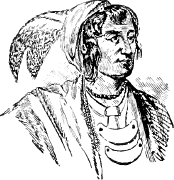<![CDATA[A group of amateur explorers believe they have found the remains of Fort Harrell, a 170 year old base built during the Second Seminole war. After making five journeys into the Everglades, fighting through thick vegetation and difficult conditions, the three man team eventually found their goal. The area has been made even more impenetrable by the creation of the Tamiami Trail, which dried up the once robust New River, leaving just a small creek. The three explorers, Shawn Beightol, a high-school chemistry teacher, Chris Harris a computer engineer and Tony Pernas, a U.S. National Park service employee, begun their search by studying a host of historical war maps, engineering surveys and aerial photographs from the 1940’s. Once they had isolated the region they believed the fort to be in, they began their expeditions. Fort Harrell’s discovery is a triumph of the power of enthusiasm and dedication in unearthing areas of the past long thought lost. Proposed cut backs to archaeology funding by the U.S. government would mean the work of unpaid enthusiasts such as these will increasingly important if the U.S. is to maintain any connection to its history. The three Seminole Wars were the biggest conflicts in the U.S. between the War of Independence and the American Civil War. The first skirmishes began in 1814, with the third and final war finishing in 1858. The underlying cause was the U.S. army’s attempts to forcibly relocate Seminole Indians to reservations west of the Mississippi River, and their inevitable resistance. Beightol, Pernas and Harris realised they had found the fort when they discovered a series of regularly occurring pot holes in some limestone, which they think were foundations for log fort walls, like several other forts from this period. The total absence of decaying modern materials on the site, combined with the erosion of the holes, has led them to conclude that this is the site of the fort and not a later fishing or hunting camp. By mapping the limestone holes they have formed a picture of what the fort may have looked like. It appears the building had four interior walls, an extension that could have been a bastion or livestock enclosure, and a nearby boat landing. It is slowly becoming possible to develop an insight into the lives of the men and soldiers who used the fort. Built during the Second Seminole War, Harrell was a supply store and place for soldiers to rest between battles. It was one of around eight small forts erected in the interior of Florida, all with similar intentions. These smaller forts are not as famous as the likes of Fort Lauderdale. Whereas the larger bases were built in costal areas with great tactical importance, Harrell is isolated in the Florida swamps. It was a small installation that was the site of no major battles and never home to a legendary general. It was only in use for a few years and therefore barely registers in the history books, but it is still vital in understanding a key part of U.S. history that is often swept aside. Beightol told the Sun Sentinel that he wants the site of Harrell to be linked to the Tamiami Trail, to facilitate easier access for visitors. The site of the fort could easily have remained uncovered. Its discovery provides a reminder of the lives of those who had to serve in such an inhospitable location. The continued discovery of such sites is also vital for furthering America’s conversation with its past, and acknowledging the often uncomfortable history of the treatment of Native Americans in the nation’s creation.]]>
Amateur Explorers Find Fort from Second Seminole War
